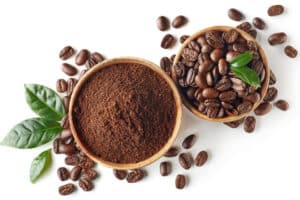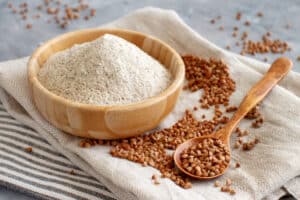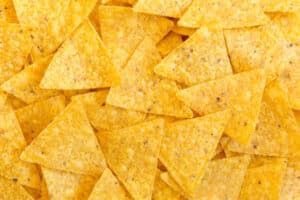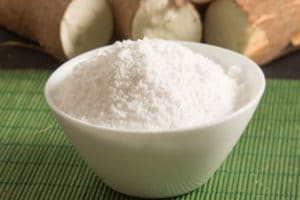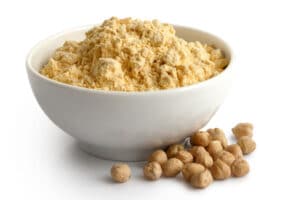What Is Chickpea Flour?
Chickpea flour, or garbanzo bean flour, is a type of flour that chefs use in Indian dishes. It originates from India and other Middle Eastern regions.
It consists of a variety of chickpeas, known as Bengal grams, which are high in protein and fiber. If you have trouble with digestion, chickpea flour is gluten-free, making it a great substitute for wheat flour.
Chickpea flour is optimal for cooking. If you have difficulty finding it in stores, you can make it yourself. Take your chickpeas, grind them up in a food processor or coffee grinder, then sift out the larger pieces.
If you need another gluten-free option and don’t have time to make your own, there are chickpea flour substitutes you can use to construct any dish.
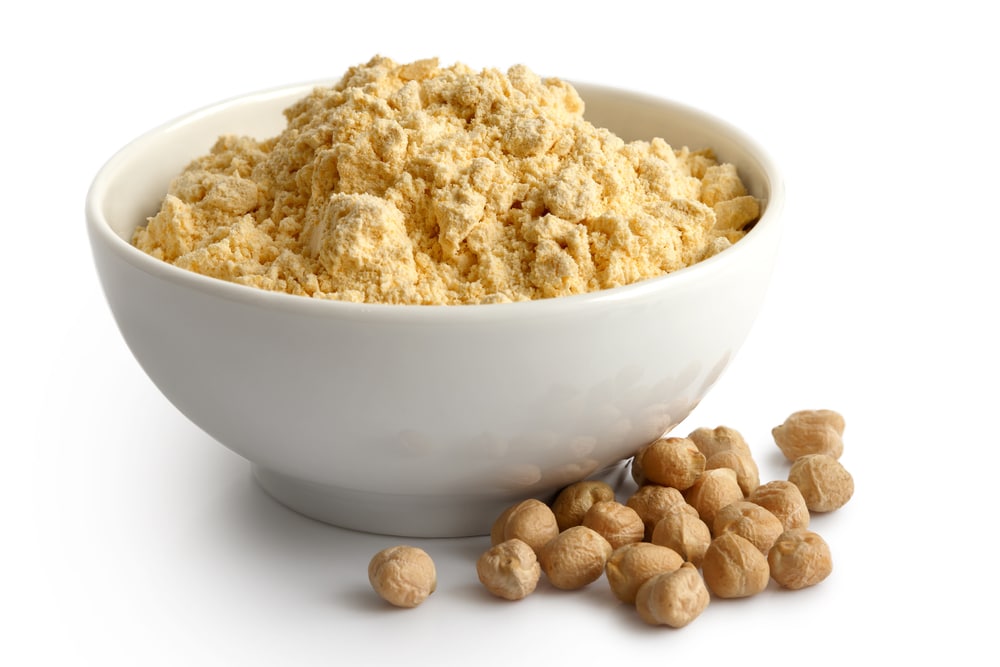
Top 5 Chickpea Flour Substitutes
The best substitutes for chickpea flour are Quinola Flour, Oat Flour and Almond Flour. Millet Flour and Cassava Flour are also good chickpea flour alternatives.
1. Quinoa Flour As a Chickpea Substitution
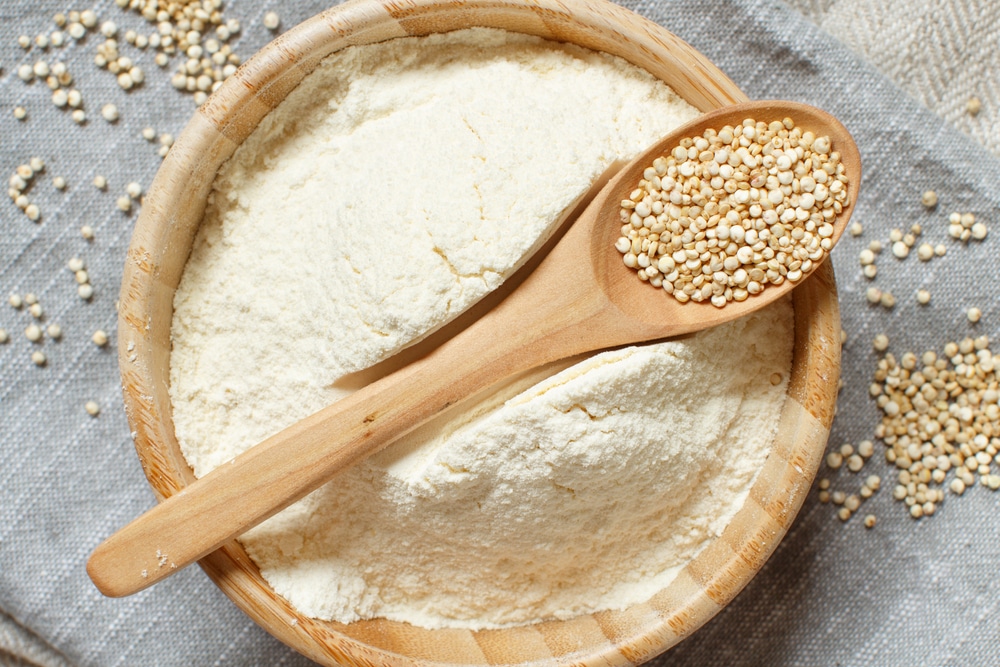
Quinoa is an excellent chickpea flour substitute. You can use Quinoa flour as a one-on-one flour substitute for dishes. It makes a good binder for mixing different ingredients. Quinoa flour is not a flour to use alone. It is gluten-free, so there’s less concern for gastrointestinal upset.
It has a high nutritional value. For example, quinoa is high in calcium, for bone and teeth health, and iron, for red blood cell production. It is a complete protein, meaning it contains all the amino acids your body needs to help keep you alert.
The high fiber content, about 20 grams per cup, is a plus for weight management. It can make you feel full faster and keep you content longer. Feeling full will prevent you from overeating.
Quinoa flour can be very costly, but fear not, because it is simple to make at home with a blender or other grinding device. Place whole raw seeds in a pan on the stove and toast them until they turn golden brown and start to pop. The seeds may smell like nuts.
After the raw seeds roast, move them to your blender and grind them into a fine powder, about one minute. After grinding them, sift through them with a wire colander or a sifter and remove the pieces that are too large. If you desire, you can use the large pieces for cereal. Add milk and enjoy a tasty breakfast. Now you are ready to use your flour to bake goodies.
2. Oat Flour As a Chickpea Flour Substitution
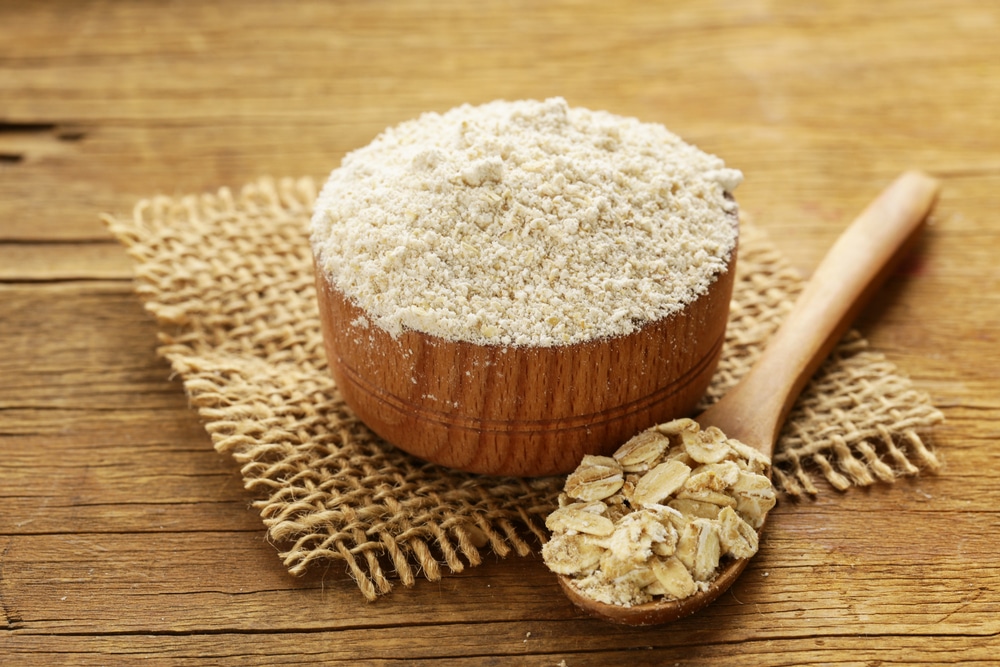
Oat flour is an easy substitution for chickpea flour because you can also make it at home. All you need to do is grind the oatmeal in a blender or food processor for about 15 seconds or until it is a fine powder.
Oat flour is rich in nutrients and fiber. It is a healthy carbohydrate that is gentle on your blood sugar and your gut. If you need a denser texture or mild, sweet flavors in your recipes, this is the flour for you. The nutty flavor may add some extra delight to your goodies.
Factories may process oats in the same building as nuts and grains, making them subject to glutens. If you choose to go gluten-free, make sure the oats you buy are gluten-free. Look at the labels on the containers that verify certification.
To substitute for other gluten-free flour, add up to 20% of oat flour to other flour to get the right combination for all your baked goods.
Related Article: Wheat Bran vs Oat Bran Comparison
3. Almond Flour As a Chickpea Flour Substitution
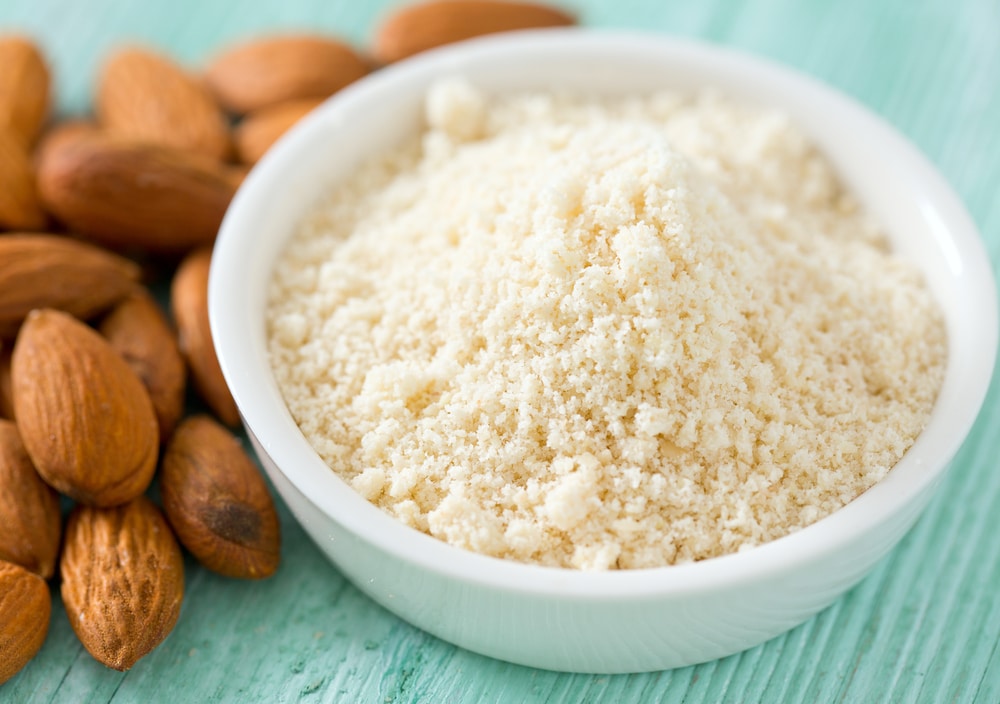
Another substitute for chickpea flour is almond flour. You can find almond flour in the store, or use your almonds and grind them into a fine flour. To make your almond flour, soften the skins of the almonds through boiling. Peel them before grinding. It is one of several options in regards to a finer texture.
Like most other gluten-free flours, almond flour consists of many vitamins, protein, and fiber for a healthier option. It is a favorite alternative to wheat flour because of its lack of gluten. Those with gastrointestinal disorders, such as celiac disease or other intolerances, can use this flour.
It is sweeter, allowing for a better taste. It is rich in Vitamin E (antioxidants) and magnesium, to help improve blood pressure. The fiber in almond flour helps reduce cholesterol levels in the blood. It is a lower carb option for sweet treats, which makes it safer for diabetics because it helps control blood sugar levels.
4. Millet Flour As a Chickpea Flour Substitution
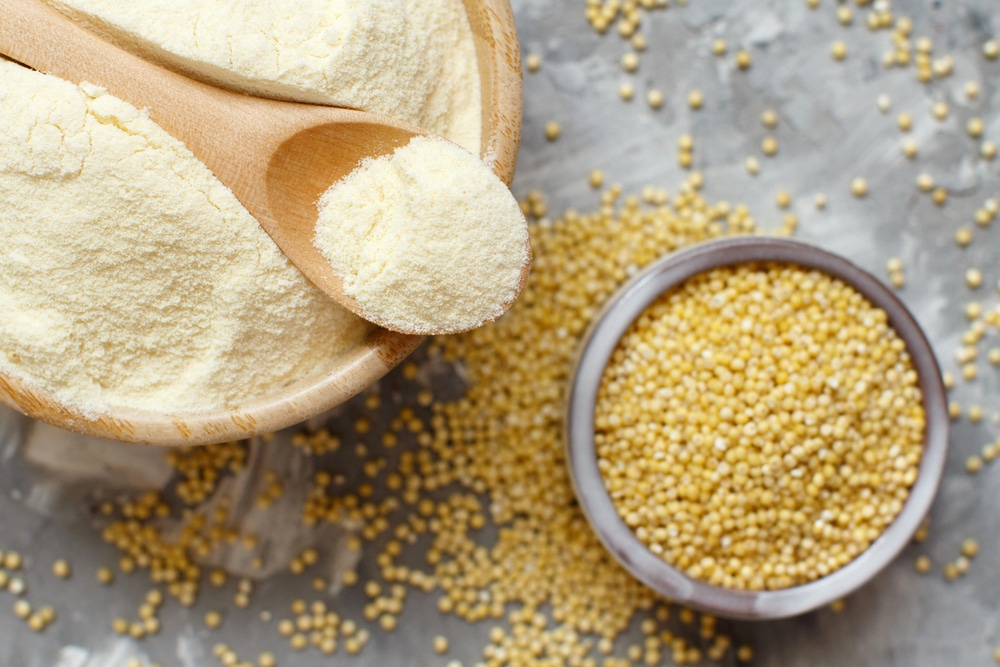
Millet flour is like chickpeas and quinoa, except it does not have as much protein. It is an ancient grain, grown in Eastern Asia and Africa, and is easier to digest.
It is a starchy cereal grain that has a high carbohydrate content (about 41 grams). It is also high in calcium, fiber, and dairy-free. You can find it in stores or make your own by grinding in a blender or coffee grinder.
To use millet flour as a chickpea flour substitution, mix it with another gluten-free flour to help it stay together better. Too much or too little water can cause it to not bind correctly. You may consider using millet flour in sweet dishes since it tends to taste sweeter than most flours.
If you have problems with your thyroid, select another flour. Millet can cause iodine levels to drop and complicate thyroid disease.
5.Cassava Flour As a Chickpea Flour Substitution
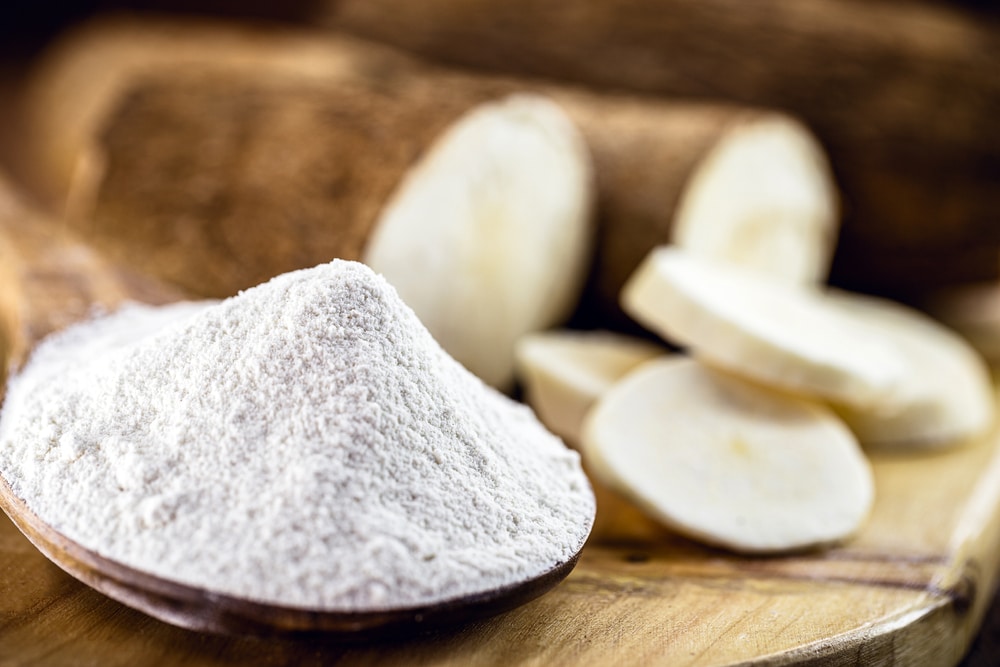
For a milder flavor or texture, cassava flour is a good option. It is a great chickpea flour substitution because of its gluten-free characteristic. It helps to boost the good bacteria in your gut, which improves colon health.
Cassava plants come from South America, parts of Asia, and Africa. How do you make cassava flour? If you have a cassava plant, take the whole root and peel it. Dry it. Grind it with a food processor or blender.
It is not gritty, and you can use it in place of wheat flour. If you want to make bread, mix it with other flours because cassava flour will not rise by itself.
Cassava flour is rich in carbohydrates, which means diabetics should eat it in moderation. It works well as a thickener in recipes. The protein content in this flour is not high, so you may want to consider eating other foods that are high in protein.
Conclusion
Chickpea flour thickens without curdling and can substitute eggs in some recipes. You can use it for sweet or savory, depending on your need. Chickpea flour has a distinct taste, so mixing it with other flours will help disguise the taste.
There are a lot of healthier options when it comes to baking, including flours. Chickpea flour is an excellent choice when it comes to eating healthier. Baking should not have to be all about calories and carbohydrates. Food can still taste good and be better for you at the same time.
Depending on your taste or texture in recipes, consider a variety of chickpea flour substitutes for your next baking session.
By the way, did you know chickpea flour works great as a skin moisturizer and cleanser? It is gentle and hypo-allergenic. Apply it to your face and see the difference in your skin.


